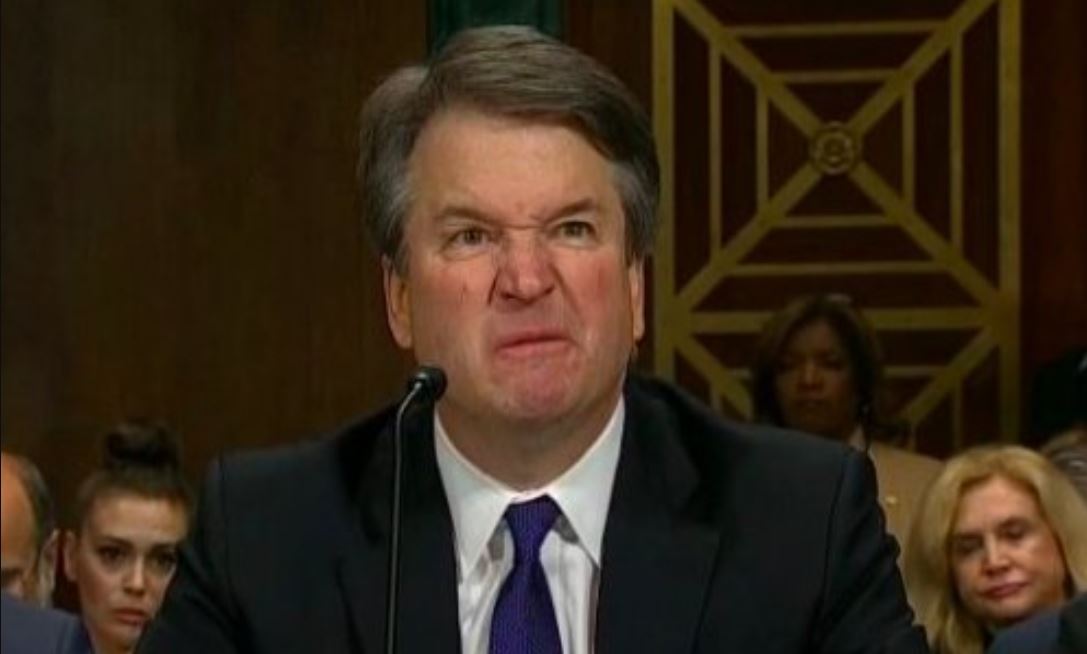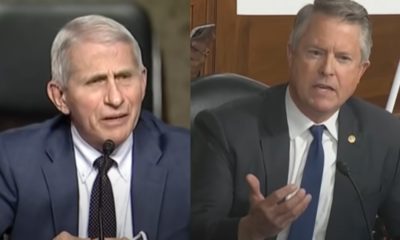NEWS
Justice Kavanaugh Is A Threat To Roe V. Wade – But Not The Only One
With the confirmation of Brett Kavanaugh to the U.S. Supreme Court, some are wondering: Will Roe v. Wade, the landmark case recognizing a woman’s right to choose to terminate a pregnancy, continue to be the law of the land?
Kavanaugh told Sen. Susan Collins, a key vote to approve his nomination, that he viewed Roe v. Wade as “settled law.” But from my vantage point as a constitutional law professor who also litigates reproductive rights cases, the future of Roe v. Wade looks more tenuous than it ever has.
A new vacancy, a new court
Replacing Justice Anthony Kennedy, who retired this summer, with Kavanaugh, who was a deeply conservative judge during his time on the D.C. Circuit Court of Appeals, will fundamentally remake constitutional doctrine in this area.
In 1992, Kennedy’s swing vote preserved Roe v. Wade in a 5-4 decision known as Planned Parenthood v. Casey. More recently, in the 2016 case of Whole Woman’s Health v. Hellerstedt, Justice Kennedy’s vote was critical to the five-justice majority, which again affirmed the right to choose as fundamental.
But, despite what he told Collins, Kavanaugh has expressed hostility to Roe.
In a public speech last year, Kavanaugh praised the late Chief Justice William Rehnquist’s dissent from the Roe decision. He also voted against an undocumented minor in government custody who wanted an abortion, complaining that the judges who voted in favor of the young woman were granting a right to “abortion on demand” and arguing that the woman should have to delay the procedure for a few weeks until a family could be found to sponsor her.
This record suggests Kavanaugh could provide a critical fifth vote to the anti-Roe wing of the court, joining justices Clarence Thomas, John Roberts, Samuel Alito and Neil Gorsuch.
What happens if Roe is overruled?
If the Supreme Court votes to overrule Roe, it wouldn’t immediately make abortion illegal throughout the country. That would probably require five justices to decide that embryos and fetuses are “persons” entitled to constitutional protection. No justice – not even the strongly anti-abortion Justice Antonin Scalia – has ever taken such an extreme view.
Instead, the court would probably say that states are allowed to restrict abortion however they see fit. The court may rule that states can choose to protect “potential life,” and that the woman’s right to choose whether and when to become a parent is not strong enough to overcome the state’s interest in protecting fetuses.
That means some states would probably outlaw abortion altogether, perhaps with narrow exceptions in cases of rape or incest, or when the woman’s life is in danger. Other states may place few or no restrictions on abortion – perhaps making it illegal only once the fetus is viable, typically after the 22nd week of pregnancy.
A challenge in the states
Numerous states stand ready to mount a challenge to Roe.
In 2018 alone, seven states have introduced or passed so-called “heartbeat bills” that ban abortion as early as six weeks of pregnancy. These laws are bold assaults on Roe’s central premise: that states cannot ban abortions early in pregnancy.
A challenge to a “heartbeat bill” could bring Roe before the court, but in reality, a challenge to a law like that isn’t even necessary. In fact, almost any abortion case, including several that are already pending, could become a vehicle for overturning Roe if the justice choose to hear it. The Supreme Court gets to pick and choose the cases it hears and needs only four justices to vote to hear a case. That means it might decide to weigh in on abortion rights as soon as this fall.
For example, the newly composed Supreme Court could decide to take up the constitutionality of laws in Ohio or Indiana banning abortions sought for particular reasons, such as fetal anomaly. Both laws have been blocked by federal courts, and either could still be appealed to the Supreme Court. If the court decides to hear one of those cases, it could uphold the laws on the grounds that Roe was incorrect and a new, more relaxed legal standard should apply to abortion restrictions.
What’s more, nine states, including Wisconsin and West Virginia, actually still have pre-Roe abortion bans on the books. These laws weren’t being enforced as long as Roe was the law of the land. If Roe is overturned, it’s possible that prosecutors in those states would try to bring criminal charges against doctors performing abortions, without even waiting for the legislature to pass a new law banning abortion.
Four additional states – North Dakota, South Dakota, Louisiana and Mississippi – have passed so-called “trigger laws” providing that abortion will become illegal the moment Roe is overruled.
Even in the absence of laws such as these, though, many state legislatures won’t hesitate to enact new abortion bans immediately. In fact, the Center for Reproductive Rights considers only 21 states to be relatively low-risk for passing new abortion bans if Roe fell.
Of these 21, a few states are expected to take an active role in protecting abortion access in the absence of Roe. This would likely mean that women in Massachusetts would live under a permissive set of laws, while women in Mississippi would face more restrictive ones.
The role of Roberts
Of course, it’s possible that Roe will live another day.
With Kavanaugh seated, Chief Justice John Roberts will be at the ideological center of the court, with four conservatives – Thomas, Alito, Gorsuch and Kavanaugh – all to the right of him. Roberts is therefore likely to become the swing vote.
Roberts is a famously careful jurist who often avoids overruling precedent by issuing a narrow opinion instead. He is also likely concerned about his legacy. He might not want the Roberts Court to be the court that overruled Roe and took away the right to choose. He might be concerned about the backlash among members of the public, who have long assumed that Roe was here to stay and who favor keeping it by more than a two-to-one margin.
Then again, many justices have affirmed their devotion to precedent, only to later overturn it. Both Roberts and Gorsuch spoke favorably about following precedent during their Senate confirmation hearings. Yet both justices voted in June 2018 to overturn a unanimous Supreme Court case protecting the rights of unions – Abood v. Detroit Board of Education – that had stood undisturbed for more than 40 years.
Still, it’s important not to lose sight of the bigger picture.
Whether or not Roe goes, with Kavanaugh on the bench the Supreme Court is likely to shift far to the right on reproductive rights — potentially affecting not just abortion, but access to contraception as well. One sign of this shift is Kavanaugh’s record of siding with employers seeking to block employees’ access to birth control under the ACA.
And, even if Roe isn’t overturned, it may continue to exist in name only, as the Supreme Court is likely to uphold every sort of restriction short of an outright abortion ban.
In short, there are many possible paths for Roe v. Wade in the future, and significant questions remain. One thing is almost certain, though – the court will continue to erode the power of Roe.
This story has been updated from a version published on Aug. 2, 2018. An earlier version appeared on March 19, 2017.
B. Jessie Hill, Associate Dean for Academic Affairs and Judge Ben C. Green Professor of Law, Case Western Reserve University
This article is republished from The Conversation under a Creative Commons license. Read the original article.
![]()




















